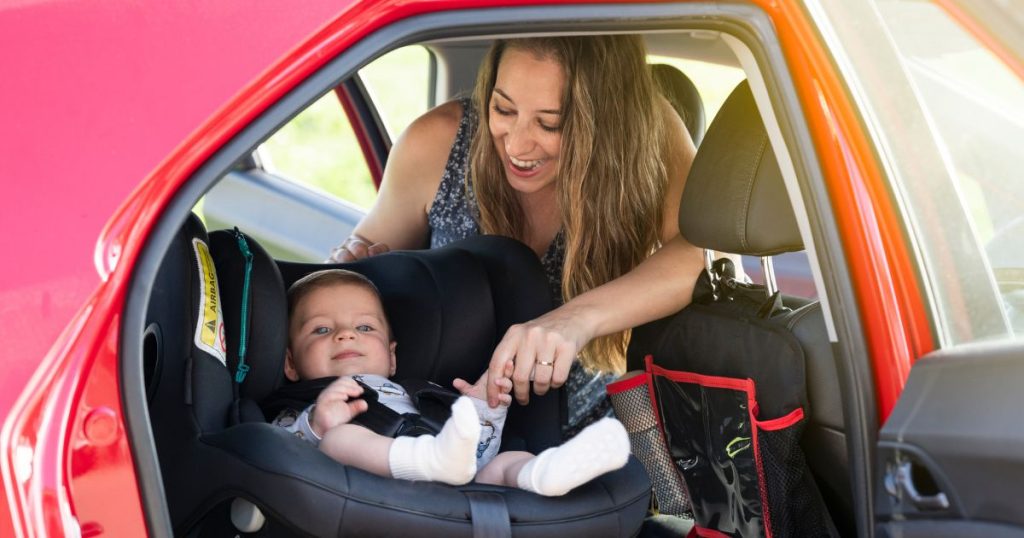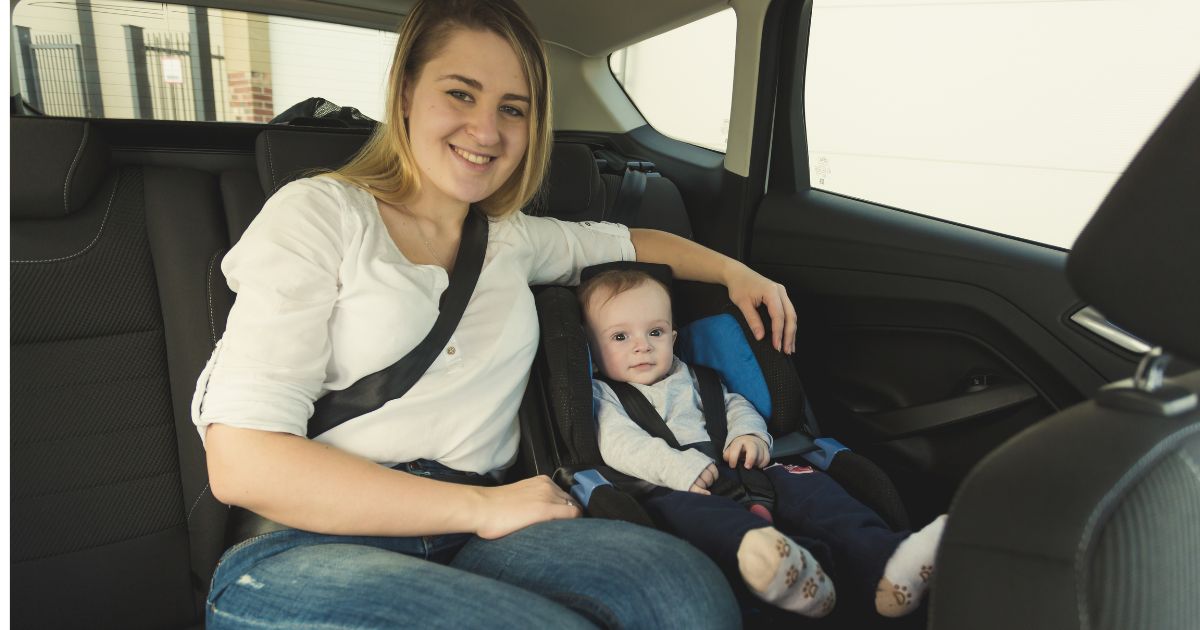Introduction
baby car seat newborn . Among the numerous products on your list, one stands out as non-negotiable in its significance: the child’s vehicle seat. Navigating the world of automobile seats, however, can feel overwhelming.This detailed guide is developed to demystify the process. We will walk you through every element of picking, installing, and using a child car seat for your newborn. From understanding the different types of seats to mastering the best installation, you will gain the confidence required to make a notified and safe choice for your Family.

Our goal is to provide a trustworthy and helpful resource, ensuring that your child’s first ride Home and every journey after is a safe one.
Comprehending the Basics: Why a Specialized Car Seat for a Newborn is Crucial
A newborn’s body is incredibly delicate. Their heads are disproportionately large compared to the rest of their body, and their neck muscles are not yet strong enough to provide support. In case of a sudden stop or a collision, these elements make them very susceptible to head and spine cable injuries.
Standard safety seat belts are created for grownups and older children, not for the small frame of a newborn. A specialized infant vehicle seat is crafted to cocoon and protect your infant. It nestles their body, supports their head and neck, and soaks up and disperses the forces of an impact away from them. This is why using a seat specifically designed for a newborn’s weight and height is not merely a recommendation—it’s a critical safety requirement.
Secret Safety Features to Look For
When assessing a newborn vehicle seat, several key features are critical for ensuring maximum defense:
5-Point Harness System: This is the gold standard for securing a safety seat. It includes two straps over the shoulders, two straps over the hips, and one strap that buckles in between the legs. This system protects the baby snugly in the seat and disperses crash forces throughout the strongest parts of their body.
Side-Impact Protection (SIP): Many contemporary safety seats feature enhanced SIP, which includes additional foam or air-filled cushions around the child’s head and chest area. This feature provides an extra defense in the event of a side-on collision.
Energy-Absorbing Foam: Look for seats lined with expanded polystyrene (EPS) or similar energy-absorbing foam. This material is vital for cushioning the baby and taking in impact energy during a crash.
Proper Recline Angle: For newborns, a semi-reclined position is important to keep their airways open. A safety seat that is too upright can cause an infant’s head to flop forward, potentially blocking their airway. The majority of infant seats feature an integrated recline indicator to help you achieve the correct angle.
Types of Car Seats for a Newborn
When you begin your search, you will encounter two primary types of car seats suitable for a newborn: the infant car seat and the convertible car seat
The Infant Car Seat (Rear-Facing Only).
An infant vehicle seat is designed solely for babies and is utilized only in the rear-facing position. These seats are tailored for the tiniest passengers, typically from birth, and weigh approximately 22 to 35 pounds, depending on the model.
Advantages of an Infant Car Seat:
Portability: The most significant benefit is convenience. A baby safety seat includes a lightweight provider that clicks into and out of a base that stays installed in your vehicle. This allows you to move your sleeping baby from the car to your Home or into a compatible stroller without unbuckling them.
Snug Fit for Newborns: They are specifically designed to provide a safe, secure, and comfortable fit for tiny infants, often featuring extra padding and support inserts that can be removed as the infant grows.
Correct Recline: Infant seats are engineered to provide the optimum recline angle for newborns, which is vital for air passage safety.
Considerations:.
Minimal Lifespan: Your infant will outgrow their infant safety seat fairly rapidly, usually within the first year. You will then be required to acquire a new, bigger safety seat.
Expense: While convenient, this indicates you will be buying at least two safety seats throughout your kid’s early years.
The Convertible Car Seat.
A convertible automobile seat is a longer-term option. It “converts” from a rear-facing seat for infants and young children to a forward-facing seat for older children. Some designs, known as all-in-one seats, can even transform into a car seat suitable for school-aged children.
Benefits of a Convertible Car Seat:.
Durability and Value: You buy one seat that can last for many years. This can be more cost-efficient in the long run compared to purchasing an infant seat and then a convertible seat later on.
Higher Weight and Height Limits: Convertible seats typically have greater rear-facing weight and height limitations, allowing you to keep your child in the safer rear-facing position for longer, as recommended by the American Academy of Pediatrics (AAP).

Considerations:.
Lack of Portability: Convertible automobile seats are big, heavy, and designed to stay installed in the car. You can not remove the seat to carry your baby. This indicates you will need to unbuckle and move your infant whenever you leave the vehicle.
Fit for Small Newborns: While many convertible seats are recommended for babies (typically starting at 5 pounds), they may not provide the same snug, customized fit as an infant-specific seat. You may need to use a set of baby inserts to ensure an appropriate fit; even then, it may not be ideal for a very small or premature child.
Baby Car Seat vs. Convertible Car Seat: Which is Right for You?
The choice between a convertible seat and an infant seat typically boils down to lifestyle and budget.
Select an infant car seat if you value convenience and portability. If you live in a colder environment where you want to lessen your baby’s exposure, or if you plan to use a travel system (a safety seat that clicks into a stroller), the infant seat is an excellent option.
Pick a convertible car seat if you are focusing on long-term value and want to buy one seat that will last for several years. If you don’t mind transferring your child in and out of the car and wish to take full advantage of the time they spend rear-facing, a convertible seat is a solid investment.
Mastering Car Seat Installation: The Key to Safety.
A car seat is just as safe as its setup. Shockingly, research studies have shown that a high percentage of car seats are installed or used improperly.
There are two techniques for securing a car seat: using the vehicle’s seat belt or the LATCH system.
Understanding the LATCH System.
Lock means Lower Anchors and Tethers for Children. It’s a system designed to simplify and protect the setup of car seats. The majority of cars and all automobile seats manufactured after September 1, 2002, are equipped with the LATCH system.
Lower Anchors: These are a pair of metal bars located in the vehicle’s seat crack, where the seat back and seat cushion meet.
Tethers: A tether strap is found at the top of a convertible car’s and truck seat (utilized for forward-facing only) and connects to a tether anchor in the vehicle.
When setting up a rear-facing baby or convertible seat, you will utilize the lower anchors. You link the clips or adapters from the safety seat base or the seat itself to the lower anchors in your automobile.
Set up the Vehicle Seat Belt.
If your car doesn’t have LATCH, or if you find it difficult to get a secure setup with LATCH, you can use the vehicle’s safety belt. When done properly, both approaches are equally safe. Never use both the LATCH system and the seatbelt at the same time, unless your vehicle’s seat manufacturer specifically allows it.
To install with a seat belt, thread the car’s belt through the designated belt course on the car’s seat (plainly marked for rear-facing). After buckling the seat belt, you must engage the locking system to keep it tight. In most newer vehicles, you do this by pulling the shoulder belt all the way out until it makes a clicking sound, then feeding it back in to tighten.
The Inch Test: Ensuring a Secure Installation.
Regardless of the setup approach you choose, the objective is to achieve a tight fit. Once the seat is installed, perform the “inch test.”
Grip the safety seat at the belt course (where it is secured to the vehicle).
The safety seat must withstand more than one inch in any direction.
If it moves more than an inch, you need to tighten up the installation. You may need to put your body weight into the seat while tightening the LATCH straps or seatbelt to achieve a firm fit.
Placing Your Newborn in the Car Seat.
Once the seat is securely set up, the next step is to harness your infant properly. This is as crucial as the installation itself.
The Rear-Facing Position: A Mandate for Safety.
All toddlers and infants should ride in a rear-facing vehicle seat for as long as possible, until they reach the maximum weight or height allowed by their car seat’s manufacturer. This is the suggestion of the AAP and the National Highway Traffic Safety Administration (NHTSA).
Why is rear-facing so crucial? In a frontal crash (the most common and most serious type of crash), a rear-facing seat cradles the child’s head, spinal column, and neck. The vehicle seat absorbs the impact forces, dispersing them evenly across the entire seat shell. In contrast, a forward-facing kid’s head is thrust forward, putting tremendous stress on their undeveloped neck and spine, which can lead to catastrophic injury.

Achieving the Correct Harness Fit.
A snug harness is essential. Follow these steps each time you buckle your baby in:.
Utilize Strap Height: For a rear-facing newborn, the harness straps should be positioned at or slightly listed below the baby’s shoulders. This avoids the infant from sliding upward in a crash.
Chest Clip Position: The chest clip ought to be placed at armpit level. A clip that is too low (on the abdominal area) can trigger internal organ damage in a crash. A clip that is too expensive can interfere with the airway. Believe “armpit level is ticket level.”.
Harness Tightness (The Pinch Test): After tightening the harness and buckling, try to pinch a horizontal fold of the strap at your infant’s collarbone. The harness is too loose if you can pinch any excess webbing. Tighten it up until your fingers move off the strap. The harness ought to be snug, with no slack.
Avoid Bulky Clothing: Never put your infant in their safety seat while they are wearing a thick winter coat or snowsuit. Bulky clothing can develop extra space and slack in the harness, which can compress in a crash and cause the infant to be ejected from the seat. Rather, dress your infant in thin layers and place a blanket or a car-seat-safe poncho over them after they are firmly buckled.
Safety Seat Safety Beyond the Basics.
Beyond setup and harnessing, there are other crucial considerations for keeping your newborn safe.
Car Seat Expiration Dates.
Simply like milk, car seats have an expiration date. Over time, the plastic can deteriorate due to exposure to sunlight and temperature fluctuations, as well as advancements in security innovation. The expiration date is typically marked on the seat itself or printed on a label. Many automobile seats last 6 to 10 years after their date of manufacture. Always check the expiration date before using a seat.
The Dangers of Used Car Seats.
While it may be tempting to save money by accepting a used safety seat from a friend or buying one online, this is strongly discouraged unless you understand its complete history. You need to be particular that:.
The seat has never been in a crash (even a minor one can compromise its structural integrity).
All parts, labels, and directions exist.
The seat is not ended or remembered.
If you can not confirm all of these points, it is safest to purchase a brand-new safety seat. Your child’s safety deserves the financial investment.
Register Your Car Seat.
When you buy a new vehicle seat, you will discover a registration card in the box. Please fill it out and mail it in, or register your seat online.
When to Seek Professional Help.
Vehicle seat installation can be tricky. For assurance, it is highly advised to have your setup examined by a certified Child Passenger Safety Technician (CPST). These professionals are trained to teach you how to install and utilize your safety seat properly. You can discover a CPST in your area through organizations like Safe Kids Worldwide.
Selecting the very best Baby Car Seat for Your Newborn.
With a solid understanding of the security principles, you can now consider other elements that contribute to the best choice for your household.
Compatibility with Your Vehicle.
Not every automobile seat fits well in every car. Inspect for a safe and secure fit in the back seat, and ensure that the installed seat allows sufficient space for both the motorist and the front-seat traveler.
Relief of Use Features.
Search for features that make your life simpler, as you will be using this seat every day.
No-Rethread Harness: This feature allows you to adjust the harness height without needing to uninstall the seat and manually re-route the straps.
Easy-to-Read Recline Indicators: Bubble levels or color-coded signs can help you quickly verify that the seat is reclined at the correct angle.
Basic LATCH Connectors: Some seats feature push-on LATCH connectors, which are easier to use than the standard hook-style clips.
Fabric and Comfort.
Think about the convenience of your child. Breathable materials can help prevent your baby from overheating. Look for machine-washable covers for simple cleaning– spit-up and diaper blowouts are unavoidable.
Last Journey Preparations.
As you prepare for the special day, take the time to install the safety seat base or convertible car seat in your car well before your child’s due date. Practice using a doll or stuffed animal to become comfortable and positive with the process. This preparation will decrease stress and ensure you are ready for that first, precious ride Home.

Picking a baby safety seat is one of the most important choices you will make as a brand-new moms or dad. By prioritizing security, comprehending the different types, and mastering the installation, you are supplying the finest possible protection for your newborn. This knowledge empowers you to take a trip with confidence, knowing your most precious traveler is safe on every journey.
FAQ.
Q1: Where is the safest location to set up a child’s car seat in a vehicle?
The best place for any car seat is the back seat. Many car seats lack LATCH anchors for the center seat or have a bulge that makes a tight fit difficult.
Q2: How long can a newborn remain in a vehicle seat?
It’s suggested to restrict the time a newborn spends in their car seat to no more than 2 hours at a time. Automobile seats are for travel, not for sleeping at Home.
Q3: Can I use an infant car seat on a plane?
Yes, most baby and convertible automobile seats are approved by the Federal Aviation Administration (FAA) for use on planes. Utilizing a vehicle seat on a plane is the safest way for your baby to fly.
Q4: What should I do if my baby’s head drops forward in the safety seat?
If your newborn’s head drops forward, it is an indication that the automobile seat is too upright. Suppose the seat is currently at its optimum recline and the issue persists. In that case, you can often place a firmly rolled towel or swimming pool noodle under the front edge of the vehicle seat (where the baby’s feet are) to help achieve a more comfortable angle. Always consult your car seat’s handbook for specific guidelines on adjusting the recline angle.
Q5: When can I switch my baby to a forward-facing safety seat?
You should keep your child rear-facing for as long as possible, until they reach the maximum height or weight limit for the rear-facing position of their convertible car seat. Do not hurry to turn them forward-facing. This is not a developmental turning point. The “legs are bent” or “feet are touching the seat back” issues are not safety issues; kids are versatile and comfortable in this position. Rear-facing is five times more secure than forward-facing for young kids. Many children can and should stay rear-facing until they are at least 3 or 4 years old.
<script type="application/ld+json">
{
"@context": "https://schema.org",
"@type": "BlogPosting",
"mainEntityOfPage": {
"@type": "WebPage",
"@id": "https://redrosebaby.com/"
},
"headline": "6 Best Baby Car Seat Newborn Finds for Happy Journeys",
"description": "baby car seat newborn . Among the numerous products on your list, one stands out as non-negotiable in its significance: the child's vehicle seat. Navigating the world of automobile seats, however, can feel overwhelming.This detailed guide is developed to demystify the process. We will walk you through every element of picking, installing, and using a child car seat for your newborn. From understanding the different types of seats to mastering the best installation,",
"image": "https://redrosebaby.com/wp-content/uploads/2025/09/baby-car-seat-newborn-4-1024x538.jpg",
"author": {
"@type": "Person",
"name": "Masud Parvez",
"url": "https://redrosebaby.com/about/"
},
"publisher": {
"@type": "Organization",
"name": "Masud Parvez",
"logo": {
"@type": "ImageObject",
"url": "https://redrosebaby.com/wp-content/uploads/2025/09/cropped-red-rose-baby.jpg"
}
},
"datePublished": "2025-09-25",
"dateModified": "2025-09-25"
}
</script>
